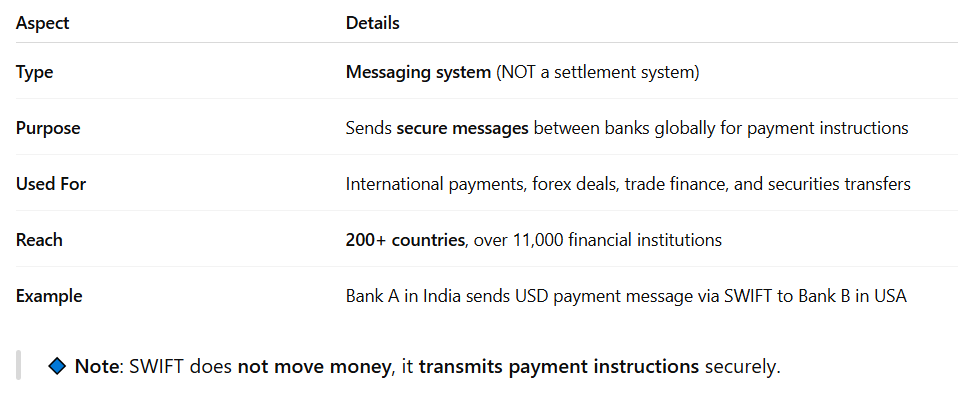Unit 4: Exchange Dealings
Dealing Position
It refers to the current position of a forex dealer (bank or trader) after conducting buying and selling activities of foreign currencies.
Purpose: To track how much foreign currency a dealer owes or holds, i.e., their net position.
Types
- Long Position: When a dealer has bought more foreign currency than sold. (Expecting the value to rise.)
- Short Position: When a dealer has sold more foreign currency than bought. (Expecting the value to fall.)
Exchange Position
The net balance of foreign currencies held by a bank or dealer at a given point.
Formula
Exchange Position=Purchases (Receivables)−Sales (Payables)
Types
- Overbought Position: Purchases > Sales (Excess foreign currency).
- Oversold Position: Sales > Purchases (Deficit in foreign currency).
Management: Banks maintain this position within limits set by central banks to control foreign exchange risk.
Cash Position
The actual availability of foreign currency in cash or demand accounts at a particular time.
Focus: This tracks the liquidity — whether the dealer has enough cash to settle transactions.
Example: If a customer comes to withdraw foreign currency, the cash position ensures the bank can fulfill this need immediately.
Difference from Exchange Position: Exchange position includes forward contracts and deals yet to settle, while cash position is about available funds now.
Comparison Table
Summary
- Dealing Position = How much the dealer is exposed to market changes.
- Exchange Position = Net buying/selling position.
- Cash Position = Available foreign currency for immediate use.
Mirror Account
Purpose
- To ensure accuracy and reconciliation between two accounts (home and foreign branch).
- Helps track foreign currency inflows and outflows.
Example: Branch A (India) and Branch B (USA) maintain mirror accounts in each other’s books to record reciprocal entries.
Value Date
Importance
- Ensures proper interest calculation.
- Prevents disputes over payment timing.
Exchange Profit and Loss
When It Happens
- Buying at one rate, selling at another.
- Revaluation of foreign currency holdings.
Types
- Realized Profit/Loss: From actual completed transactions.
- Unrealized Profit/Loss: From revaluation of open positions (not yet settled).
R Returns (RBI Returns in India)
Purpose
- To monitor and regulate foreign exchange transactions.
- Ensure compliance with RBI guidelines.
Types
- R-Return (Daily/Monthly): Summary of forex deals, positions, and exposures.
- Other Returns: Like XOS, BEF, ENC, for tracking exports, import payments, etc.
Contents
- Bank’s foreign currency assets and liabilities.
- Exchange position and profit/loss data.
Summary Table
Risk in Forex Dealing
Forex (Foreign Exchange) dealing involves buying/selling foreign currencies, which exposes dealers to various types of risks
Measure of Value at Risk (VaR)
Key Components
Example: A 1-day VaR of ₹10 lakh at 99% confidence means: There’s a 1% chance that the loss will exceed ₹10 lakh in one day.
Methods to Calculate VaR
Foreign Exchange Markets
Key Features
Summary Table
SWIFT (Society for Worldwide Interbank Financial Telecommunication)
CHIPS (Clearing House Interbank Payments System) – USA
CHAPS (Clearing House Automated Payment System) – UK
Fedwire (Federal Reserve Wire Network) – USA
Summary
- SWIFT: Secure message system → no funds move.
- CHIPS: Large USD payments → settled in net.
- CHAPS: Instant GBP payments → real-time gross.
- Fedwire: Instant USD payments → real-time gross.













